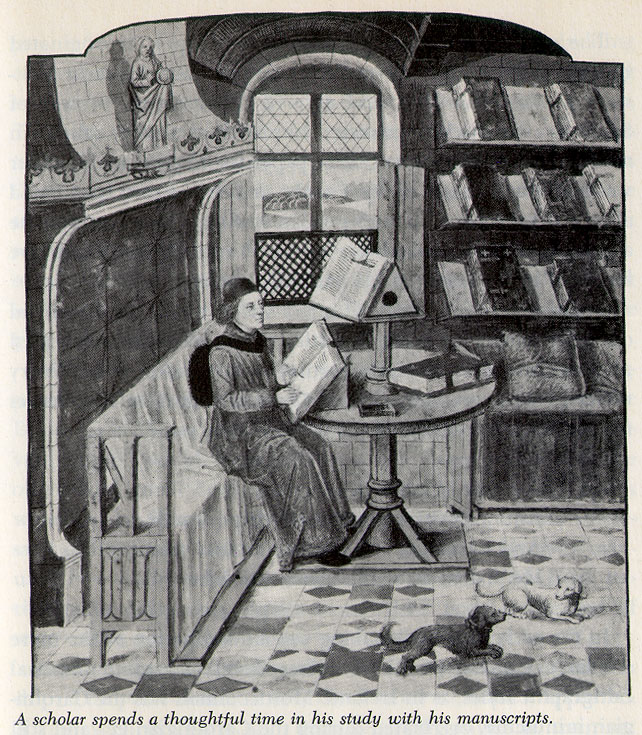Honors 3900
Critiquing a Scholarly Article
Format of paper:
- It must be typewritten (use a standard 12-point font) and double-spaced with one-inch margins. Do not include a cover page or a vinyl cover. Your name, the course number and date should appear (single-spaced) at the top of the report against the left-hand margin.
- The bibliographic citation will be single-spaced and located four spaces below the date (use the same bibliographic format as the sample above). Responses to the questions will be double-spaced and will begin two spaces below the citation. Staple all pages together in the upper left-hand corner.
- Each of the listed statements may be the first sentence of an expanded paragraph on that particular point. Thus you will be writing an eight-paragraph critique. The completed critique should be 2-3 pages in length.
When reading a published article students often make the mistake of assuming that the information theyíre reading must be the truth. Such assumptions are dangerous because scholars, like everyone else, are affected by their own history/their own experiences/their own training. Any time you read a scholarly article (or any article for that matter) you should approach it with a critical eye. Think carefully about what the author has written and ask yourself whether or not he or she has done a good job of supporting his or her argument.
In this exercise you will be selecting and critiquing an article from a scholarly journal. Your first assignment will be to select a journal article that interests you. The article you select must conform to the following criteria:Select your article from the JSTOR database or other scholarly database such as Google Scholar.
- The article must cover an event, personality, or development related to topics covered in this class.
- The article must be at least 20 pages long (i.e., 20 pages of text). Scientific articles can be 10 pages.
- The article cannot be a book review.
- The articleís date of publication must be after 1970.
Article selection is perhaps the most important part of this assignment. Many students get in hurry and select the first article they find that satisfies the four criteria. This usually proves to be a big mistake because they end up with a confusing article that is of little or no interest to them. A better approach would be to browse and find a couple of topics that interest you. Once you have identified a couple of topics then you can begin looking for an article that makes sense and will hold your interest (but donít forget about the above criteria).
Your short paper should include:
- A complete citation of the article following the standards for history (Chicago Manual of Style) Manual for Writers of Term Papers, Theses, and Dissertations
- The main purpose of this article is . . ./The key question that the author is asking is . .
- The most important
information in this article is/concerns . . .
- Identify the facts, data, or resources the author uses to support his/her argument. To expand on this statement you will have to look at the foot or endnotes.
- The main conclusion[s]/inference[s]
in this article is/are . . .
- Identify the key conclusions the author comes to and presents in the article.
- The main assumptions
underlying the authorís thinking are . . .
- Think about what the author is assuming to be true and what might be questioned.
- If you accept the authorís
line of reasoning, the implications are . . .
- What consequence does the authorís argument have on our understanding of the past and the present? On current and future scientific information?
- If you reject the authorís
line of reasoning, the implications are . . .
- What consequence does rejecting the authorís argument have on our understanding of the past and the present?
- When writing this article,
the authorís point of view may have been influenced by . . .
- Consider where they have an academic appointment. Have they published other articles on the same topic?
- Consider their ethnic or cultural background?
- What are political events around the time they published -- might those impact the questions/topics they are researching?
The most important pages in a scholarly article are usually the first 2-3 pages and the last 2-3 pages. In fact, the answers to many of these questions will be found at the beginning and/or end of the article. Thus, before you delve into the article, spend a few minutes reading the first couple of pages and the last couple of pages (donít worry about spoiling the ending, unlike literary writers, scholars seldom finish their works with a big surprise). The important thing is that you understand what the author is trying to say. You can then read the full article and determine for yourself whether he or she has done an adequate job of arguing the point.
Scientific articles are usually formatted:
- I = Introduction
- M = Materials and Methods
- R = Results and
- D = Discussion